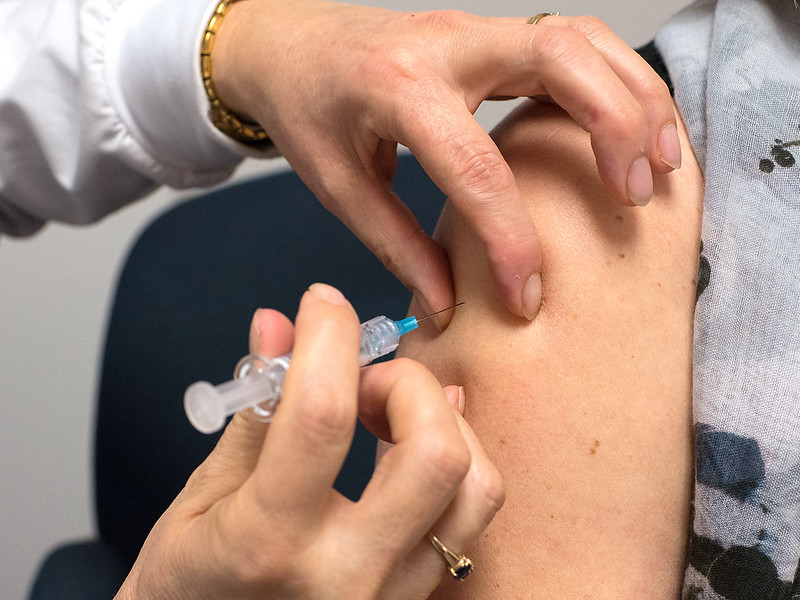Photo courtesy of Government of Prince Edward Island; CC-BY-NC-ND.
On July 21, 2022, the New York State Department of Health (NYSDOH) reported one new case of polio. The individual is experiencing paralysis but is believed to no longer be contagious. The infected individual was not vaccinated against polio,1 and the NYSDOH determined that the case originated from a live polio vaccine, which is not available in the United States. This is the first case reported in the United States since 2013, which was associated with travel.2 The last naturally occurring cases of polio in the United States were reported in 1979.1 Polio was once a global health crisis, paralyzing more than 1,000 children worldwide every day. However, its prevalence has been reduced by 99% since the formation of the Global Polio Eradication Initiative in 1988 that lead to vaccination campaigns worldwide.3
Polio is the disease caused by the poliovirus. The virus is highly contagious and spread through person-to-person contact. According to the Centers for Disease Control and Prevention (CDC), 72% of people who are infected with poliovirus will not experience visible symptoms.4 Those who do often experience flu-like symptoms that go away on their own. A small portion of people infected with poliovirus may develop serious symptoms, including meningitis (infection of the covering of the spinal cord and/or brain) or paralysis that may lead to death. There is no cure for polio, and any paralysis caused by the virus is permanent.
While polio is highly contagious and can cause life-threatening health outcomes, there are vaccines that have been proven to be safe and effective. There are 2 types of polio vaccines used around the world. First, there is an oral polio vaccine (OPV). This vaccine contains attenuated (live but weakened) poliovirus and is administered orally. 5 A main benefit of OPV is that since it is administered orally, it can be given by volunteers. 5 This can increase vaccination rates in areas with limited access to medical resources. However, OPV-derived polio infections may occur in populations with low vaccination rates. This happens when the weakened poliovirus spreads from a vaccinated individual to unvaccinated individuals and then mutates to a form that causes paralysis.6 Second, there is an inactivated poliovirus vaccine (IPV). This version of the vaccine contains inactive poliovirus and is given in a shot. 5 IPV is the only type of vaccine approved to be administered in the United States since 2000. 5 Using IPV eliminates the risk of vaccine-derived poliovirus that can occur with OPV. Additionally, two doses of IPV provide 90% immunity and 3 doses provide at least 99% immunity to poliovirus.5 The CDC recommends that children get four doses of polio vaccine between ages 2 months and 6 years. Introduction of the polio vaccine in the 1950’s has been the main component in reducing polio cases in the United States.4
Currently, there is no year-round transmission of polio in the United States.4 This accomplishment can be credited to adherence to polio vaccine schedules. As shown in New York State, it is still possible to be infected with poliovirus in areas where vaccination rates are low. It is crucial to maintain high vaccination rates in order to prevent the spread of polio in the United States.
References
- https://www.health.ny.gov/press/releases/2022/2022-07-21_polio_rockland_county.htm
- https://apnews.com/article/polio-case-new-york-4c1e2512145a1d897982f27507259d83?taid=62d996b536651200011c7a34&utm_campaign=TrueAnthem&utm_medium=AP&utm_source=Twitter
- https://polioeradication.org/polio-today/history-of-polio/
- https://www.cdc.gov/polio/what-is-polio/index.htm
- https://www.cdc.gov/vaccines/vpd/polio/index.html
- https://polioeradication.org/polio-today/polio-prevention/the-virus/vaccine-derived-polio-viruses/


